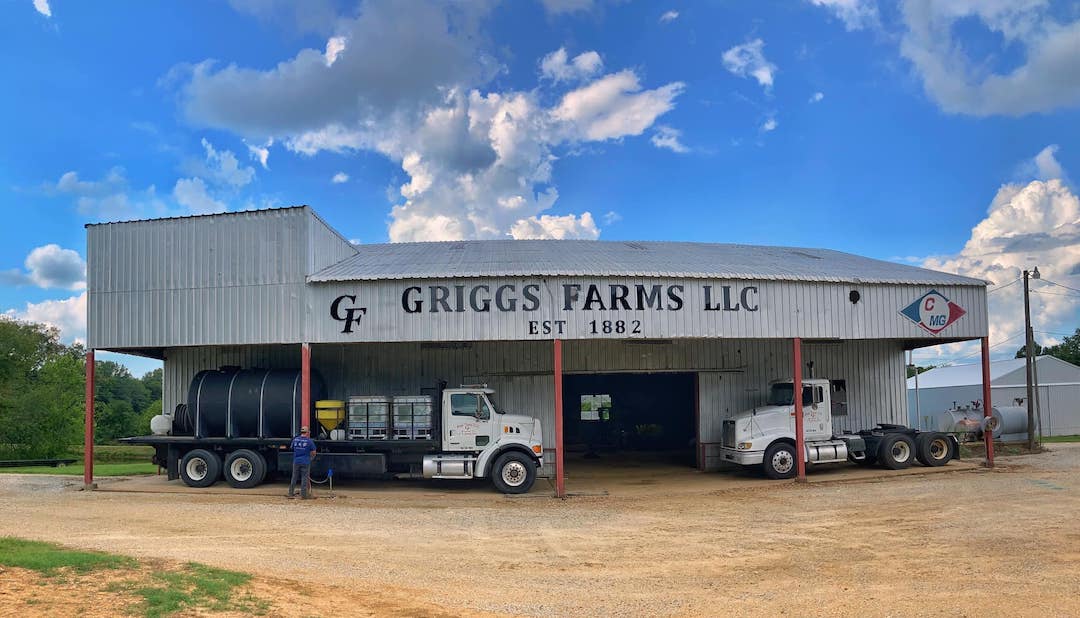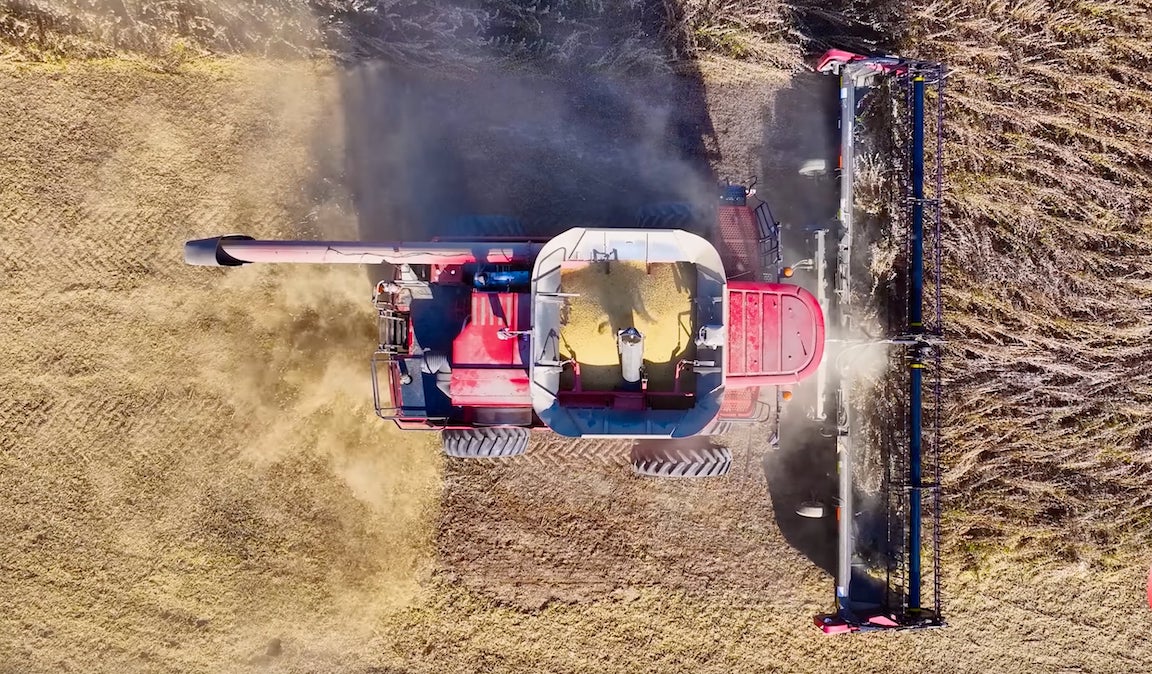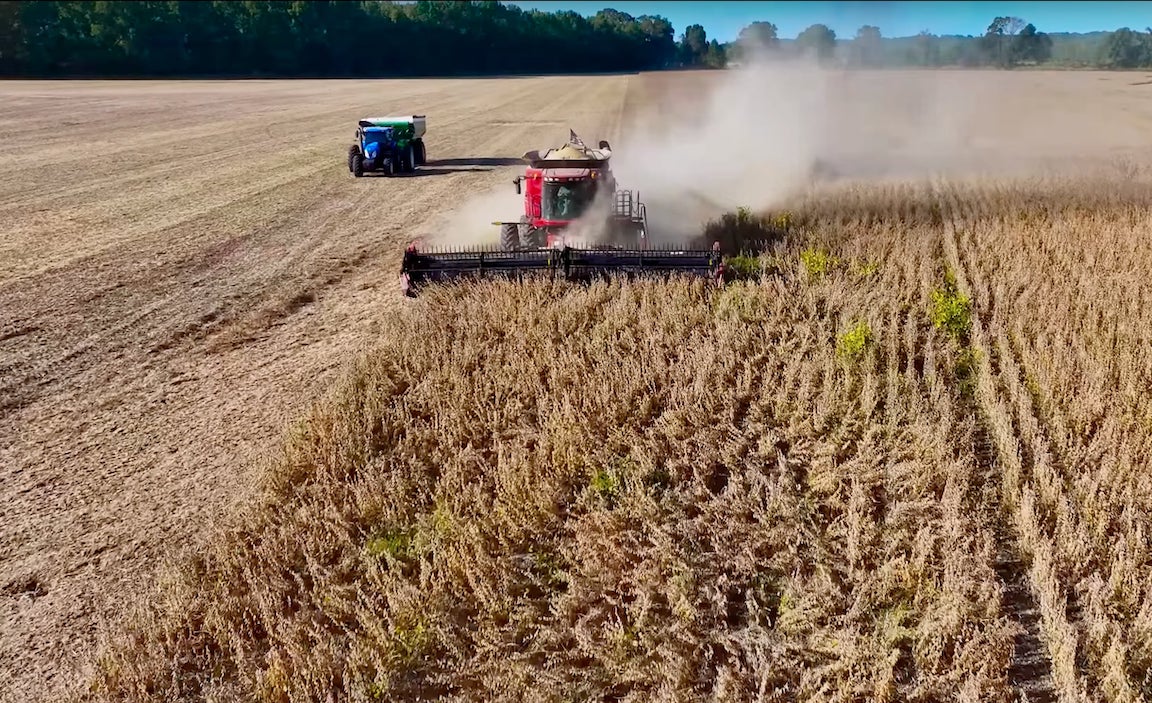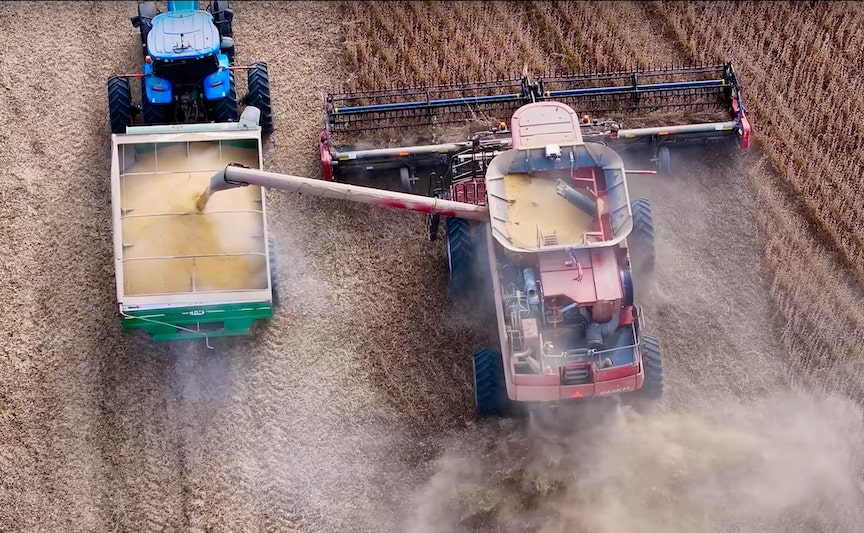Year over year, Matt Griggs throws fastballs down the middle at his dryland soybeans. No curveballs.
“I’m a low-input guy on my beans and on all my crops. That means a focus on tried-and-true agronomics: planting date, variety, fertility, and weed management.”
In 2023, Griggs averaged 81 bu. per acre on full-season soybeans and 58 bu. per acre on double-crop soybeans behind wheat.
“The past decade I’ve seen trends toward grabbing the latest product out of a jug and tossing it on for a few extra bushels,” Griggs adds. “That’s fine elsewhere and I know some of those products genuinely work, but I’m shooting for consistent averages around 75 or 80 bushels without stacking inputs. ROI don’t lie.”
Hogweed and Deer
In the hills of west Tennessee, split between Crockett and Madison counties, Griggs, 43, is the fifth generation of his family to farm. Alongside his wife, Kelly, he grows no-till corn, cotton, soybeans, and wheat on roughly 2,000 acres across relatively compact fields contoured by tree lines, terraces, and ditches.
Typically, Griggs uses a four-crop rotation: winter wheat behind cotton, bookended by double-crop soybeans, and corn planted the following year. In 2023, he planted 425 acres of double-crop soybeans, and an additional 140 acres of full-season soybeans on bottom ground.

“A low-input bean philosophy is straightforward,” Griggs says. “Maximize sunlight, dependability, consistency, time efficiency, and low costs.” (Photo by Griggs Farms)
After killing cover crops with paraquat, Griggs planted the 140 acres in late April at a population of 140,000—19” single row. “It was chilly when we planted, but I went a little extra because if I lose some stand, it’s not that big of a deal at 140,000. I know of guys making good yields at 80,000, but we can’t afford not to go much higher on our ground.”
Griggs' planting sweet spot is April 20-25, targeting summer solstice and big sunshine with group 4 soybeans. “When I plant, I’m aiming to hit bloom close to June 21. I want to time blooming to a week to a week-and-a-half before summer solstice. There are so many things in farming I can’t predict or control, but I know for certain that I’ll have most potential sunshine on June 21. I want my crop ready to intercept and take advantage.”
“It’s about timing,” he adds. “I love late group 4 beans because they’ll mature right after corn harvest, but before cotton is ready to go.”
Griggs consistently uses a seed inoculant at planting, but in 2023, he added a standard fungicide due to a cool forecast. “I went with a fungicide this time just in case the beans had to sit in the ground a little longer than usual.”
Pioneer 48A14E, an Enlist variety, was his seed of choice. “It’s the exact same genetics as one of Pioneer’s Xtend varieties, 47A64X, and for the last several years, that 47A64X has been far and away the best bean of my life. But this time I wanted to keep Enlist in my back pocket in case of pigweed.”
However, Griggs planted into a thick cover crop and grabbed early protection by laying residuals at burndown—Zidua and metribuzin. Palmer control, he says, was effective: “We absolutely have to stay right on top of weed management and 75% off all my weed decisions are dictated by pigweed. At first or second trifoliate, we follow with Roundup and Prefix. I did have a handful of pigweeds this year, but overall, we were on top of them.”

Griggs was delayed roughly a week by late corn, but the tale of the tape revealed full-season bean yields with a fine crop—81 bu. per acre average. (Photo by Griggs Farms)
Rather than Palmer, Griggs' main weed nemesis in 2023 was grass where soybeans never overlapped the middles due to thinning by deer. Yield loss to deer is a mounting issue for Griggs: “Sometimes I’ve got fields where the middle averages 90 bushels, but along a tree line, the average drops to 30 bushels. Overall, I’d estimate 10-bushel losses in some fields on average, just because of deer.”
Feeding the Beans
In league with many U.S. soybean growers in 2023, Griggs’ geography was subject to strenuous drought. However, his full season soybeans, planted in low-lying bottoms, fared well. “Sunlight interception is the is No. 1 driver for beans and we took full advantage. There was not much water, but we got the bare amount of rain we needed and it fell at night several times.”

Strong yields, Griggs emphasizes, also rely on proper fertilization. Most years his program starts with 1.5 tons of chicken litter, followed later with a variable rate application of potash, shooting for 5% base saturation.
“Up until the last two years when fertilizer prices went nuts, we used to always put out potash. But the last two years, we figured up crop removal rates and whatever chicken litter didn’t cover, we came back with variable rate phosphorus and potash to make up the difference. This coming year, with fertilizer prices closer to reasonable, we’ll go back to target 5% base saturation. Potassium is my limiting nutrient and I have to get it right. I’m all about low inputs, but I can never afford to deny my crop what it needs.”
Tale of the Tape
At soybean harvest, Griggs was delayed roughly a week by late corn, but by mid-October, the tale of the tape was in on full-season bean yields with a fine crop—81 bu. per acre average.

On his double-crop soybeans, Griggs estimates a $97 per acre expense: “That is serious proof that you don’t have to be high-input or high-dollar to make big yields.” (Photo by Griggs Farms)
Additionally, his double-crop soybeans (Pioneer 47A64X) yielded the finest numbers of his career: 58 bu. per acre. “That is far and away the highest double-crop yields I’ve ever made. My nearest to that was 52 bushels in the past. I put it down to three factors: No. 1, sunlight. No. 2, sunlight. No. 3, sunlight. That’s why I’ve got to have my crop ready to intercept.”
On his double-crop soybeans, Griggs estimates a $97 per acre expense: “That is serious proof that you don’t have to be high-input or high-dollar to make big yields.”
Griggs has two 3-acre soybean entries in the 2023 Tennessee Soybean Yield Contest, both of which cut just over 91 bu. per acre. “On our operation, the most important thing is spending effort and money on time-proven agronomic principles: right variety, right planting date, right fertility, and right weed management,” he notes. “That’s where our biggest yields are realized. We’re not afraid to try something new, but we need consistency in our fields.”
“A low-input bean philosophy is straightforward,” Griggs concludes. “Maximize sunlight, dependability, consistency, time efficiency, and low costs. Over the long-term, focusing on the basics and being precise is what brings us soybean success.”





